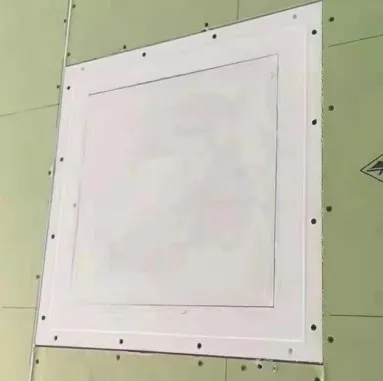- Afrikaans
- Albanian
- Amharic
- Arabic
- Armenian
- Azerbaijani
- Basque
- Belarusian
- Bengali
- Bosnian
- Bulgarian
- Catalan
- Cebuano
- Corsican
- Croatian
- Czech
- Danish
- Dutch
- English
- Esperanto
- Estonian
- French
- German
- Greek
- Hindi
- Indonesian
- irish
- Italian
- Japanese
- Korean
- Lao
- Malay
- Myanmar
- Norwegian
- Norwegian
- Polish
- Portuguese
- Romanian
- Russian
- Serbian
- Spanish
- Swedish
- Thai
- Turkish
- Ukrainian
- Uzbek
- Vietnamese
Dhj . 02, 2024 04:14 Back to list
Innovative Fiber Tiles for Modern Interior Design and Sustainable Architecture
Exploring the Versatility and Sustainability of Fiber Tiles
In recent years, the architectural and design industries have witnessed a remarkable evolution in the materials used for flooring and wall applications. Among these developments, fiber tiles have emerged as a compelling option, combining aesthetics, durability, and sustainability. This article explores the unique features of fiber tiles, their benefits, and their potential to revolutionize interior design.
What Are Fiber Tiles?
Fiber tiles are innovative flooring and wall-covering products made from a variety of natural or synthetic fibers. These tiles can comprise materials such as jute, sisal, wool, or even recycled plastics and textiles. The manufacturing process allows for a wide range of textures, patterns, and colors, making fiber tiles a versatile choice for designers and homeowners alike.
Aesthetic Appeal
One of the most striking features of fiber tiles is their aesthetic diversity. Designers are increasingly drawn to the organic textures and natural colors that can enhance the character of any space. From minimalist environments to bohemian-style interiors, fiber tiles can seamlessly fit into various design concepts. Furthermore, manufacturers often collaborate with artists and designers to introduce unique patterns, ensuring that fiber tiles are not only functional but also visually appealing.
Durability and Maintenance
Despite their soft appearance, fiber tiles boast impressive durability. Many fiber tiles are engineered to withstand heavy foot traffic, making them suitable for both residential and commercial environments. For instance, tiles made from synthetic fibers can exhibit water resistance and stain resistance, further extending their life cycle. Maintenance is relatively straightforward; regular vacuuming and occasional deep cleaning can keep the tiles looking fresh and vibrant.
Sustainability Factor
fiber tiles

In an era where environmental consciousness is paramount, fiber tiles stand out as a sustainable option. Natural fiber tiles are often made from renewable resources, and many manufacturers prioritize eco-friendly production processes. Additionally, recycled materials used in synthetic fiber tiles help reduce waste in landfills. As the demand for sustainable building materials increases, fiber tiles provide an attractive solution for eco-conscious builders and consumers.
Acoustic and Insulative Properties
Another advantage of fiber tiles is their acoustic and thermal insulative properties. The porous nature of fibers can absorb sound, reducing noise levels in busy environments. This quality is particularly advantageous in offices, public buildings, and homes where creating a peaceful atmosphere is essential. Furthermore, fiber tiles can help maintain stable indoor temperatures, leading to energy savings on heating and cooling.
Versatile Applications
Fiber tiles are not just limited to floors and walls; they can be used in a variety of applications. Designers have begun to explore their potential in custom furniture, wall art, and decorative accents. The versatility of fiber tiles allows for creative expression in unconventional ways, making them a favorite among contemporary designers. Because of their lightweight nature and ease of installation, they are also suitable for temporary installations and pop-up designs.
Challenges and Considerations
While fiber tiles offer numerous benefits, there are challenges to consider. Potential buyers should be aware of the specific maintenance needs based on the material selected. Natural fibers may require more care to avoid water damage and fading, while synthetic options might be more resilient but less sustainable. It's essential for consumers to understand the properties of the specific fiber tiles they choose to ensure they meet their project requirements.
Conclusion
Fiber tiles epitomize the intersection of design, durability, and sustainability. Their ability to add character, provide practicality, and meet eco-conscious standards make them an attractive choice for modern interiors. As the industry continues to innovate and create more options, fiber tiles are poised to play a significant role in shaping the future of architectural and interior design. Whether for residential, commercial, or creative applications, the versatility of fiber tiles ensures they will remain a staple in the design world for years to come. As we move forward, embracing such materials will not only benefit our living spaces but also contribute to a more sustainable future.
-
Transform Interiors with PVC Gypsum Ceiling: A Stylish, Durable, and Moisture-Resistant SolutionNewsMay.19,2025
-
The Smart Interior Upgrade: Discover the Durability and Versatility of Gypsum Ceiling Access Panel SolutionsNewsMay.19,2025
-
The Smart Choice for Interior Design: Discover the Value of PVC Gypsum Ceiling SolutionsNewsMay.19,2025
-
Mineral Fiber Ceiling Tiles: The Smart Blend of Performance and AestheticsNewsMay.19,2025
-
Mineral Fiber Ceiling Tiles: The Superior Choice Over Gypsum for Sound and Fire SafetyNewsMay.19,2025
-
Mineral Fiber Ceiling Tiles: Eco-Friendly Strength and Style for Every CeilingNewsMay.19,2025







